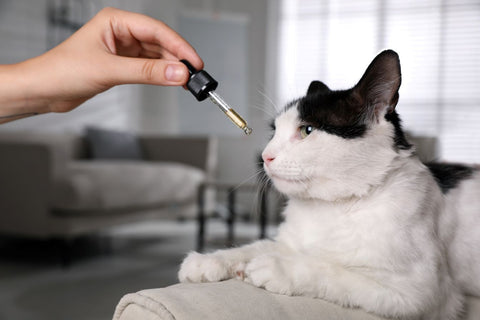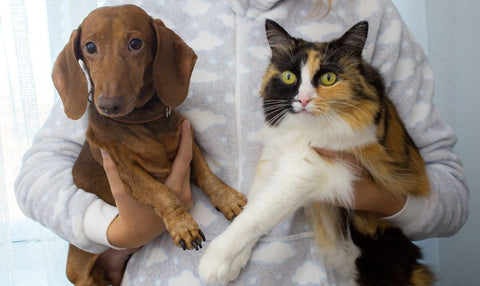

Why Microchipping Pets Is A Must
Pets hold a special place in our hearts—they're our faithful companions, our confidants, and our beloved family members. As responsible pet parents, it's our duty to ensure their safety and well-being at all times. One crucial way to protect our furry friends is through pet microchipping. In this article, we'll explore the importance of pet microchipping for dogs and cats, how it works, and why every pet owner should consider this simple yet lifesaving procedure. This includes registering your cat or dog’s microchip with your current contact information, including the chip number, and it is a good idea to include phone numbers for you and anyone else in your household who is responsible for ownership. You don’t want to miss a call telling you that your dog has been found. Remember to keep your contact information up to date with the registry, too.
What is Microchipping and How Does It Work?
A Permanent ID Solution
Microchipping is a straightforward procedure that involves implanting a tiny, rice-sized microchip under your pet's skin, typically between the shoulder blades. This microchip contains a unique identification number that can be scanned by a vet or animal shelter using a special handheld scanner. The ID number is linked to your contact information in a national pet recovery database, allowing you to be quickly reunited with your pet if they ever get lost.
2. The Importance of Microchipping for Dogs
Dogs are known for their adventurous spirit and boundless energy, which can sometimes lead them to wander off or get lost. In fact, according to the American Humane Association, approximately 10 million pets go missing each year in the United States alone. Microchipping provides dogs with a reliable form of identification that can help ensure their safe return home, especially for those without collars or ID tags, who may have a tougher time being reunited with their owners. In addition to distributing flyers and contacting local shelters and veterinarians, microchipping your dog is a crucial step in increasing the chances of finding your lost dog.
3. The Significance of Microchipping for Cats
Cats may be known for their independent nature, but they're just as prone to getting lost or straying from home as dogs. In fact, outdoor cats are at a higher risk of becoming lost or injured. Microchipping offers cat owners peace of mind knowing that their feline friend can be easily identified and reunited with them if they ever go missing, giving them the best chance of being found and returned home.
articlebanners1
4. The Benefits of Microchipping Pets
Peace of Mind for Pet Parents
As pet parents, one of our greatest fears is the thought of our beloved companions becoming lost or stolen. Microchipping provides peace of mind, knowing that even if our pets wander off, their chances of being reunited with us are significantly increased.
Reuniting Lost Pets with Their Families
Microchipping has proven to be an incredibly effective tool for reuniting lost pets with their families. Countless heartwarming stories exist of pets being found miles away from home, thanks to their microchip.
Legal Requirements and Travel Regulations
In many places, microchipping is not just recommended—it's mandatory to have a registered microchip and ID tag. Some states and countries require dogs and cats to be microchipped as part of their licensing or registration process. Additionally, microchipping may be necessary for international travel with your pet, as it serves as a form of identification recognized by the International Standards Organization (ISO). The ISO has approved and recommended a global standard for microchips, intended to create a consistent identification system worldwide. Typically, all dogs, cats, and ferrets residing within city limits must have a registered microchip and wear an ID tag at all times while outdoors, and pet owners must update the microchip with their current information in case of a change in ownership. It is important to note that not all microchips are the same, and it is recommended to use a microchip manufacturer that is recognized and accepted by the destination country's regulations. This ensures that your pet's microchip will be properly scanned and identified in case of travel or separation.
5. The Microchipping Process: Quick, Painless, and Safe
Implantation Procedure: What to Expect
The microchipping procedure is quick, simple, and virtually painless for your pet. It's similar to receiving a routine vaccination and can be done during a regular vet visit. Most pets don't even notice the implantation of the microchip, and there's no need for anesthesia. The microchip is placed just under the pet's skin, specifically in the loose skin between their shoulder blades, just the same way their regular vaccinations are.
Lifetime Protection: Ensuring Proper Registration
After your pet is microchipped, it's crucial to ensure that their microchip is properly registered and that your contact information is up to date in the pet recovery database. This ensures that if your pet ever goes missing, they can be quickly identified and returned to you. Microchip registration is an easy process that is usually done through your vet clinic or online. Each microchip number acts as a unique ID number that allows your pet to be identified by animal control, veterinarians or good Samaritans should your pet get lost. It is important to remember to regularly check and update your pet's registered contact information to ensure lifetime protection and a quick return home in case of separation.
articlebanners2
6. Frequently Asked Questions About Microchipping
Is Microchipping Painful for My Pet?
No, the microchipping procedure is not painful for pets. Most animals barely notice the implantation of the microchip, as it's similar to receiving a routine vaccination. The chip is roughly the size of a grain of rice.
Can I Track My Pet's Location with a Microchip?
No, a microchip does not have GPS tracking capabilities. It simply contains a unique identification number that can be scanned by a vet or animal shelter.
Despite common misconceptions, microchipping cannot pinpoint your pet's exact location. It serves as a permanent form of identification, like a digital ID tag, that can be scanned by veterinary clinics or animal shelters to retrieve your contact information. This simple and painless procedure offers peace of mind in knowing that your beloved pet can be easily identified and returned to you if they ever go missing. However, it's important to note that a microchip is not a GPS device and cannot be used to track your pet's location. It simply serves as a unique identifier, similar to a social security number, for your pet.
What If My Contact Information Changes?
It's essential to keep your contact information updated in the pet recovery database. If your contact information changes, be sure to notify the database provider promptly to ensure that your pet can be reunited with you if they ever go missing.
Are There Any Risks Associated with Microchipping?
Microchipping is a safe and well-tolerated procedure for most pets. However, as with any medical procedure, there is a small risk of complications, such as infection or migration of the microchip. These risks are rare and can be minimized by choosing a reputable veterinarian to perform the procedure.
Is Microchipping Expensive?
Microchipping is a relatively affordable, low-cost procedure, especially considering the peace of mind it provides. The cost of microchipping varies depending on your location and the veterinary clinic you visit, but it's typically a one-time expense that can potentially save your pet's life.
Conclusion
Microchipping your pet is a simple yet invaluable step towards ensuring their safety and well-being. Whether you have a playful pup or a curious kitty, this tiny chip offers a lifetime of protection and peace of mind. Don't wait until it's too late—schedule a microchipping appointment for your furry friend today and give them the gift of a secure future.
articlebanners3




